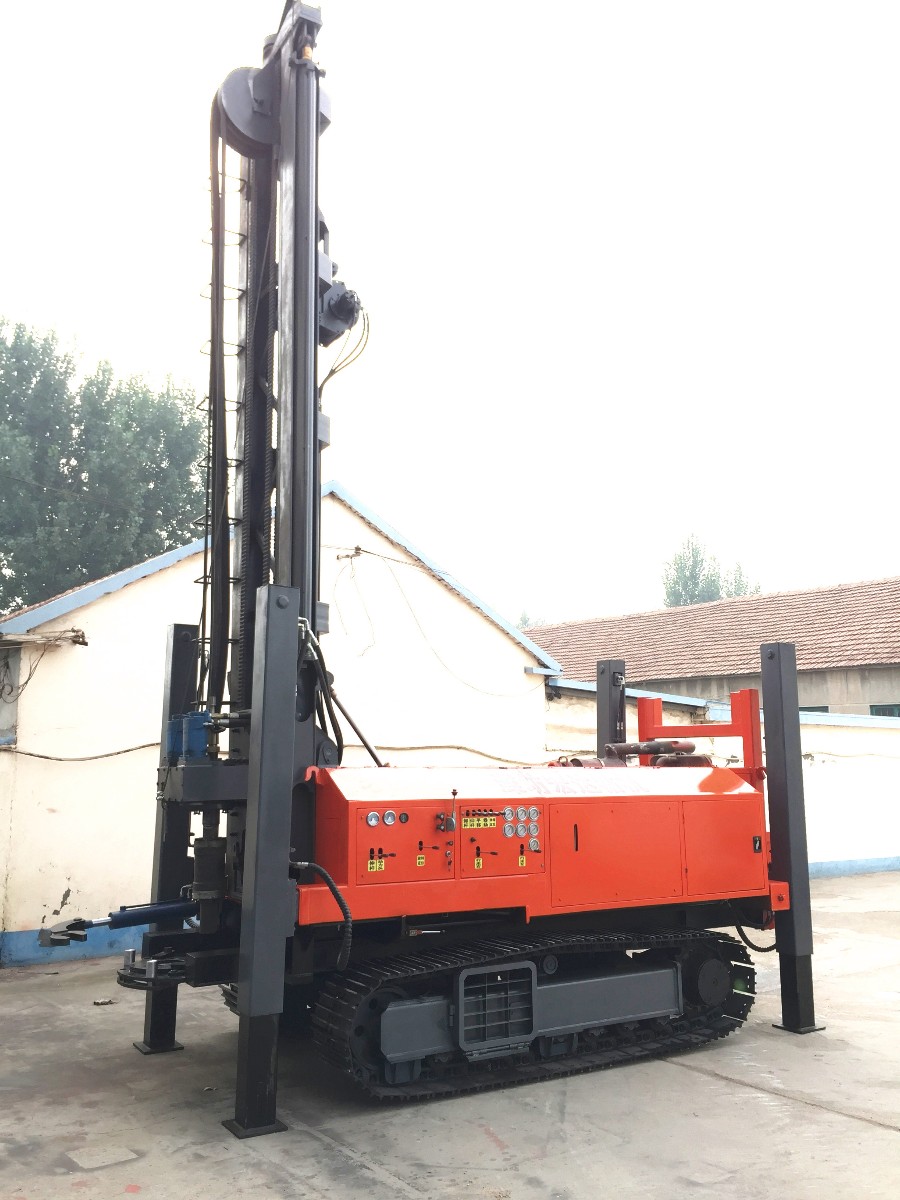How to do a good job in waterproofing water well drilling rigs
The daily maintenance of a water well Drilling Rig cannot do without waterproofing work.Here are some ways to do a great job on waterproofing for well drilling rigs:

1. For the aspects of equipment selection and design.
Pick a drilling rig with good waterproofing:
When you're buying a well drilling rig, go for the ones that are well - designed for waterproofing and have great sealing. For example, the electrical system of the rig should be sealed up. This stops water from getting in. The body of the rig should be compact, and at important parts, there should be waterproof rubber rings or gaskets. These parts are like the drill pipe connections, where you need a good seal to keep water out.
Set up the rig in a smart place:
Try to put the drilling rig in a spot that's high up, dry, and where water drains well. Avoid low - lying areas where water collects easily. If you can't avoid such places, you gotta set up good drainage. You can dig drainage ditches or put in a drainage pump. This way, you can get rid of the water around the rig quickly.
2. In terms of daily maintenance and checks
Check the seals often:
Regularly look at the seals on the rig. Things like the rubber rings where the drill pipes connect, the seals in the hydraulic system, and the rubber strips on the electrical box. If you see that these seals are worn out, old, or broken, change them right away. You need to keep the seals in good shape so water doesn't leak into the rig.
Keep the rig clean:
After using the rig, clean it up quickly. Get rid of the dirt, dust, and oil on the surface. If these things build up, they can soak up water and cause the rig to rust. Pay special attention to cleaning the cooling holes and vents. If they get blocked, the rig won't cool properly, and this can mess with its waterproofing.
Make sure the drainage works:
Check the rig's own drainage system regularly. This includes the drainage holes on the body and any water tanks. If there's a blockage, clear it out. That way, when it rains or there's other water around, the water can flow out of the rig and not build up inside.
3. In terms of waterproof treatment and protection
Put on a waterproof coating:
You can paint the metal parts and important bits of the rig with a special waterproof coating. This coating acts like a shield, keeping water from the metal so away it doesn't rust. When you pick a coating, get one that's good quality, sticks well, and won't wear off easily. And when you paint it on, follow the right way to do it. Make sure the coating is spread evenly all over and you don't miss any spots.
Use a cover or build a shed:
When the rig's not in use, especially in the rainy season or in a damp place, cover it with a waterproof cover. Or you can build a shed over it. The cover and the shed need to be really good at keeping water out and be strong enough. They should stop rain and dew from getting to the rig.
Protect the electrical system better:
The electrical system is really important on the rig and it's also the part that water can mess up the most. Besides getting a sealed electrical box, you can put some desiccant inside the box. This will soak up any moisture that might get in. Also, check the wires in the electrical system regularly. If they're damaged or wet, fix them or replace them right away.
4. In terms of operation rules and emergency plans
Follow the right way to operate:
When you're using the well drilling rig, stick to the operating rules. For example, when you're drilling, control the speed and the pressure carefully. If you do it wrong, you can break parts of the rig, and that can affect how well it keeps water out. When you're taking apart or putting together parts like the drill pipes, be careful not to damage the seals.
Have an emergency plan ready:
Come up with a plan for when there's a flood or other bad weather. If there's a big rainstorm or a flood, move the rig to a safe place quickly. If the rig gets flooded, don't turn it on right away. First, check it all over and dry it out. You can use a hair dryer or desiccant to dry the important parts like the electrical system and the engine. Make sure there's no water left, then try running the rig. Only start using it normally when you're sure everything's okay.
